Words by Petr Minařík | Photo by swpix.com
Petr Minařík, the founder of Cyclists Hub, dives into the physical data of the winners of the Tour of Flanders to show how the Ronde’s winners are getting taller, lighter and slighter, as well as increasingly faster
The Tour of Flanders has witnessed fluctuations in its length over the years. While the average distance stands at 253.67km, earlier editions saw more variability, with lengths ranging from 198km to a staggering 324km. However, since 1960, the race has maintained greater consistency in its distance, which has averaged about 260km.
When analysing winning times, we observe a fascinating trend. While the average winning time across all editions is 6 hours, 49 minutes, and 13 seconds, the fastest victory was achieved by Achiel Buysse in 1941, with a remarkable time of 5 hours and 38 minutes – but this edition of the Ronde stretched to only 198km. The slowest winning time occurred in the first edition in 1913. Paul Deman crossed the finish line after 12 hours and 3 minutes. This, though, was the longest edition, extending to 324km.
“What makes Van der Poel’s average speed even more mindblowing is the fact that the 2024 Tour of Flanders route included 2,172 vertical metres and multiple cobblestone climbs.”
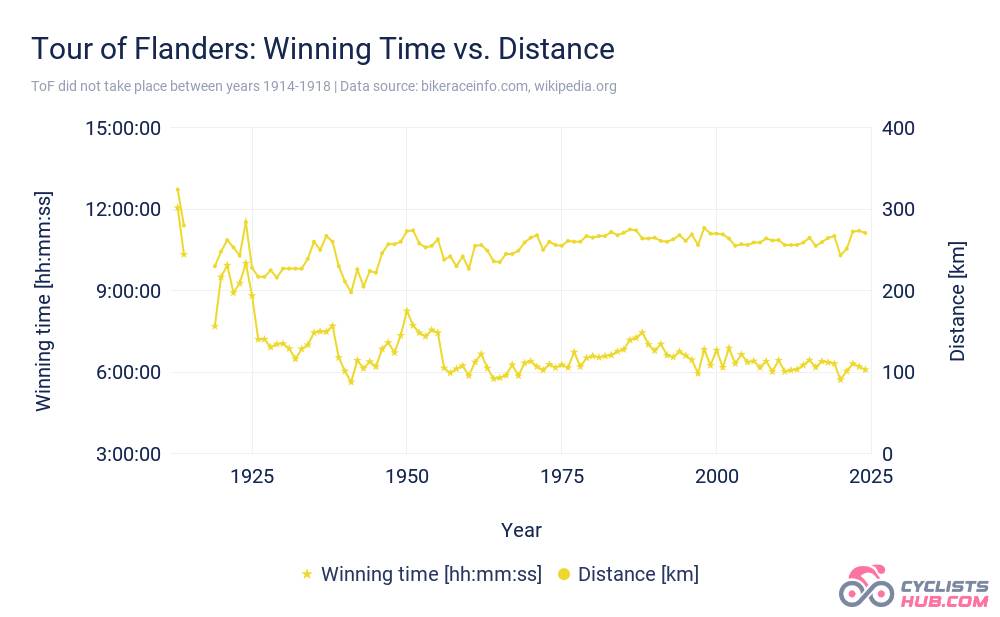
As for average speed, the race has seen a steady increase over the decades, from an average of 31.26km/h between 1920 and 1939 to 38.29km/h between 1950 and 1969 and 41.18km/h between 2000 and 2019. Notably, the 2024 edition set a new speed record with Mathieu van der Poel’s remarkable performance, but more about that later.
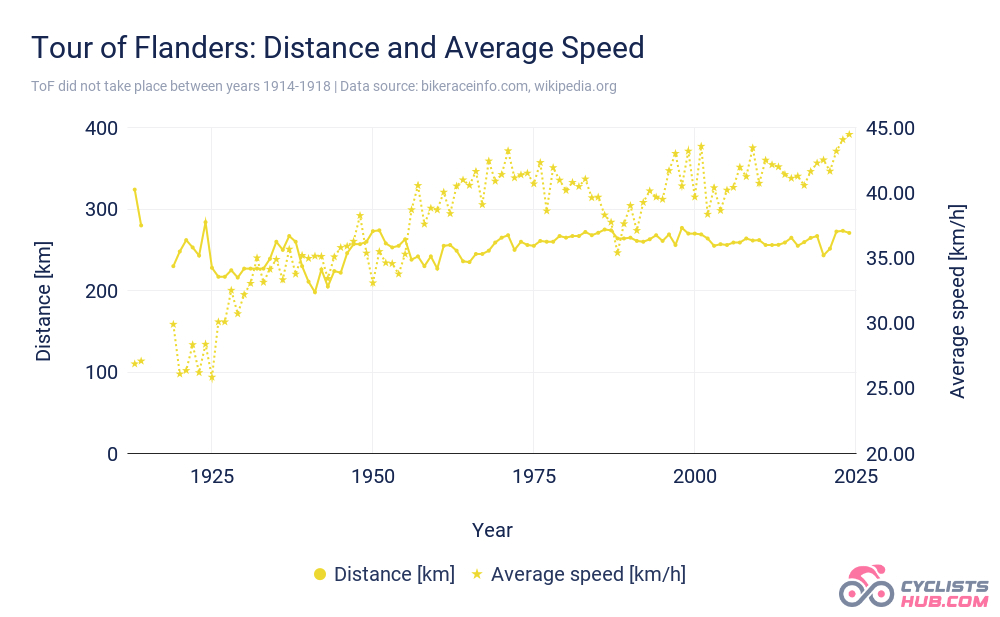
Which riders have the highest chance of winning?
The physical attributes of Tour of Flanders winners offer intriguing insights. While the average height of winners stands at 1.80 metres, there is notable variation, with Tom Boonen and Kasper Asgreen among the tallest at 1.92 metres and Raymond Impanis being the shortest at 1.68 metres.
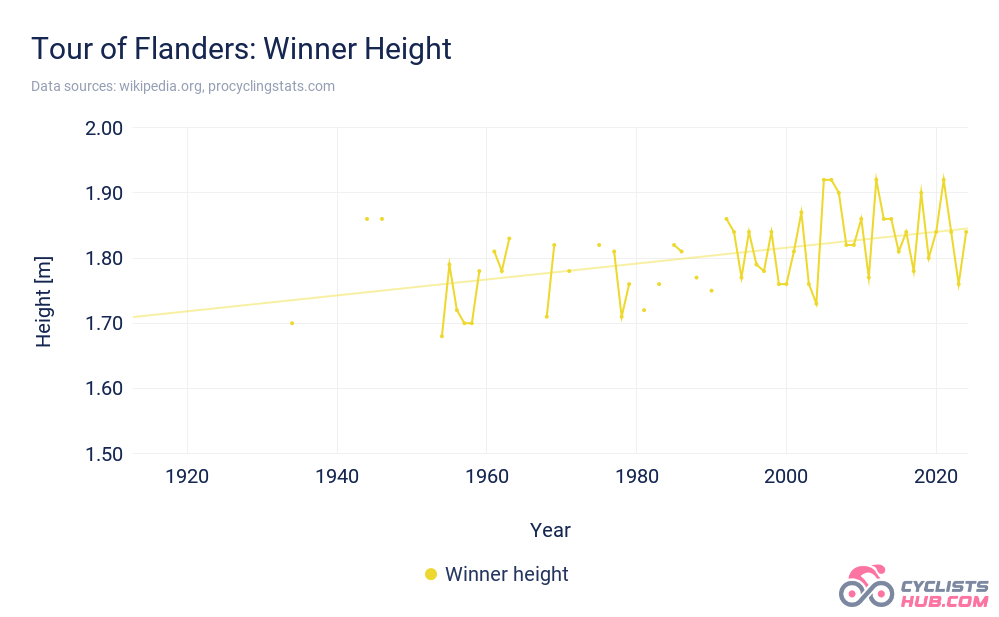
Similarly, winners exhibit varying weights, with an average of 73.4kg. Rik Van Steenbergen holds the record as the heaviest winner at 83 kg, while Michele Bartoli is the lightest at 65 kg.
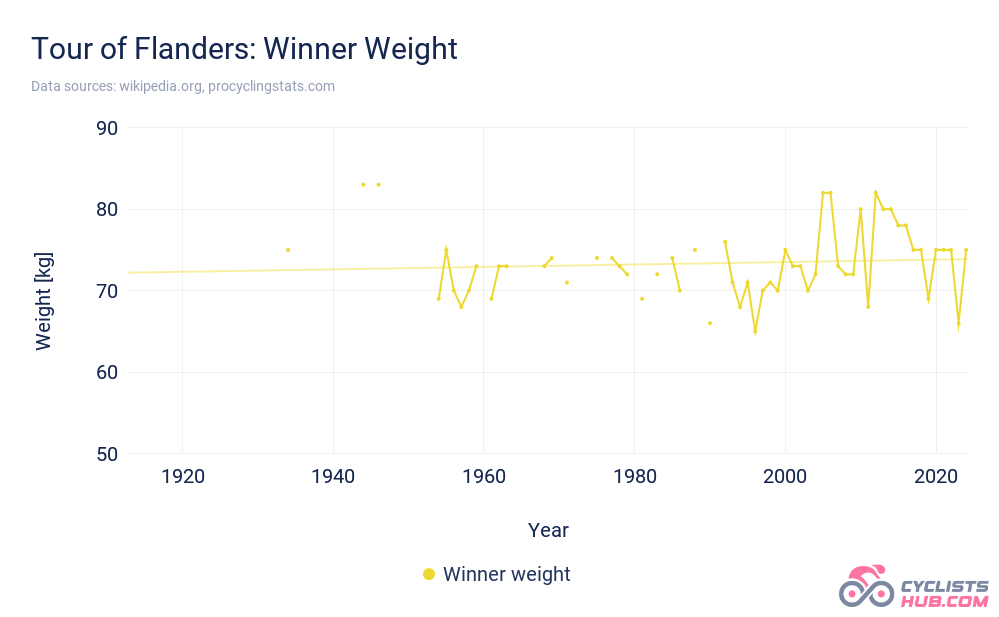
The Body Mass Index (BMI) shows that winners have an average BMI of 22.56, indicating a healthy weight range. However, there are outliers, such as Gaston Rebry, with the highest BMI of 25.96, and Alessandro Ballan, with the lowest at 20.23. Furthermore, the BMI trend is declining. Flanders’ winners are getting taller on average. Their weight also rises but not as quickly as their height, resulting in decreasing BMI.
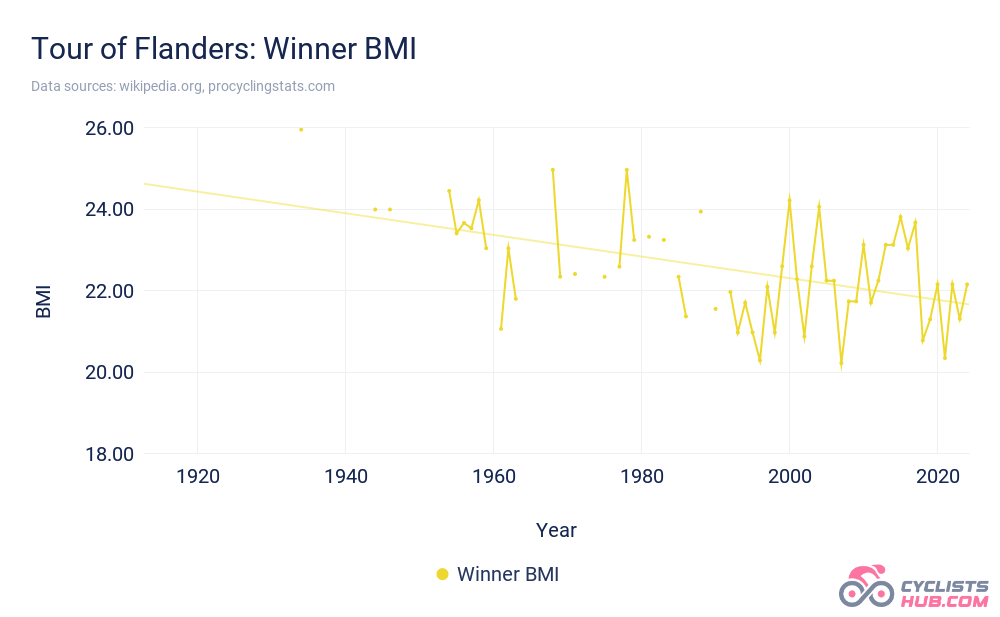
Mathieu van der Poel Made History Again in the 2024 Tour of Flanders
In the latest edition of the Tour of Flanders, Mathieu van der Poel from the Netherlands emerged victorious, completing the challenging 270.8km route in a remarkable time of 6 hours and 5 minutes, with an average speed of 44.48km/h. This marked the fastest average speed recorded in the history of the race, placing van der Poel among the elite group of cyclists who have claimed victory three times. What makes this average speed even more mindblowing is the fact that the 2024 Tour of Flanders route included 2,172 vertical metres and multiple cobblestone climbs.
Will the first 45km/h Flanders happen soon?
The Tour of Flanders is not just a race; it’s a testament to cycling’s endurance, skill, and evolution. As the material, training methods, and field level improve, it’s only a matter of time before the 45km/h barrier is broken.
Please keep in mind that weight and height data are not available for all past winners, especially those from first years. Riders’ racing weights also change, so these statistics should be viewed with a grain of salt. Still, they give us interesting insights. What do you think?
If you want to learn more, check out the original Tour of Flanders statistics article on Cyclists Hub.






